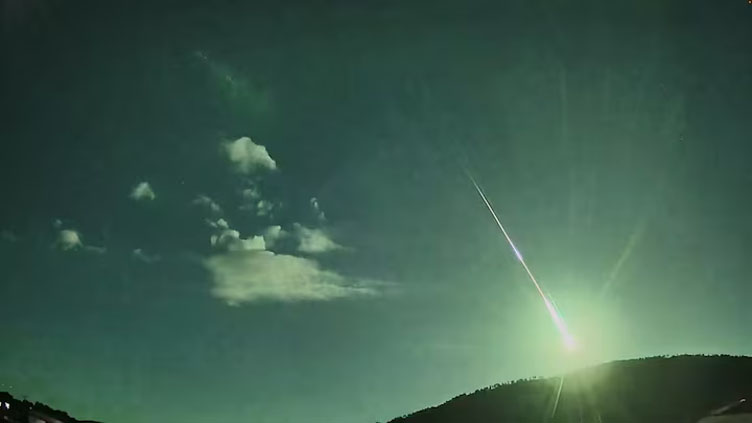Pakistan all set to witness rare Comet with naked eye

Technology
The comet will continue to be visible in the morning skies till October 03
ISLAMABAD (APP) - Pakistan is all set to witness the Rare Comet (Tsuchinshan ATLAS) A3 through the naked on Sunday morning.
Spokesperson of SUPARCO, Marya Tariq told APP that the comet, named Comet C/2023 (Tsuchinshan ATLAS) A3, is going to visit us after 80,000 years as it returns to the inner solar system, just passing a few million miles (25 million miles) from our home at closest approach.
This comet is currently making the turn around the Sun and has become fairly bright to be visible with the naked eye. Many people across the world have already reported sighting it with the naked eye, including Pakistan.
“If you are a night sky enthusiast and an early riser, now is the chance to have a glimpse of this beautiful visitor”, the Spokesperson said.
Currently, the comet rises around 4:45 AM and can be seen when it’s around 3-4 degrees altitude above the horizon until twilight sets in and it fades into the sunlight around 05:20 AM.
To locate the comet, look a few degrees right of East, where the sun rises; one would be able to find it with his naked eyes, given the atmosphere is clear of any haze and the horizon is clearly visible.
The comet will continue to be visible in the morning skies till October 03, and after that, it will start going down towards the Sun until it turns back around the Sun and becomes visible again in the evening sky from October 13 onwards.
As there has been torrential rainfall across most parts of the country, Sunday would be the best day to have a glimpse of this comet.
Sharing the tips for tomorrow’s viewing, the Spokesperson asked to observe it at 12:15 AM and locate Orion’s belt roughly around East; it should be around 10 degrees altitude from the horizon, which is quite a fair altitude.
One must mark any building or any object over the horizon directly below Orion’s belt. This is important because this is exactly the spot where the comet will rise.
The comet will start rising from 04:45 AM and will continue to rise; the best chance would be when it reaches 4 degrees altitude around 05:05 AM, and after that, twilight will start setting in and will fade into the Sunlight gradually till 05:20 AM.
Comets have been observed by humanity for thousands of years, and it’s only recently that they have been understood and studied in great detail.
From being considered carriers of bad omens, disasters, and turmoil in the pre-modern era to having landed a rover on the surface of a comet, we, as humanity, have come a long way.
Comets have been described in many cultural heritages for millennia, with their beautiful appearance not only mesmerizing night sky gazers but also casting fears of doom and gloom among the most.
It was the curiosity of the human mind that led us to study and discover so much about comets, and now we know that these are just “dirty snowballs” originating from the outskirts of our Solar system and keep orbiting our star, the Sun.
However, it’s their mesmerizing appearance that makes night sky enthusiasts go crazy just to have a glimpse of these visitors.


